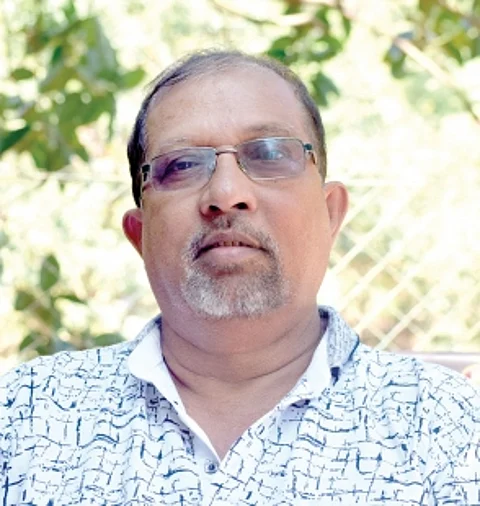

Christianity is per se egalitarian. Nevertheless, caste is a continuing feature of the Catholic community in Goa.
One may have to return to the sixteenth century to make an attempt, to find out how this has come to be. Goa was a bastion of castes, when the Portuguese arrived. The missionaries found that each caste was a homogenous group; there was no collective name to describe the belief system of the native people. The concept called Hindu did not exist; so they invented a unified name and called the practitioners Konkne after the Konkan.
The missionaries had the protective umbrella of the rulers who had replaced the earlier suzerains. The preachers transited from village to village convincing the natives to discard their gods, explaining the benefits if they opt for the God of the rulers. The village leaders along with their underlings enticed by the prospect of being on the ruling side decide to shift allegiance. Five hundred years down the road, one can see that the situation has not changed much. Now the MLAs with their underlings too shift, to be on the ruling side! And for the same reasons! The ruling party does not have to use force; likewise, neither the missionaries had to!
There was a clear caste based hierarchy in the villages, before the advent of the missionaries. Those who had first settled either by vanquishing the older inhabitants or by usurping virgin land came to acquire vast estates. The surplus was put in common ownership, with rules for subsequent distribution; later codified into the Code of Communidades. These settlers, as was customary moved in caste based vangors (clans) and came to be known as gaocars. As generations passed the gaocars got entrenched; the others who had been subjugated or came as labourers became the underclass, like those we call ghanttis these days.
The conversion was en-masse. But how could the dvija castes that had co-habited with the advijas for thousands of years in a higher-lower relationship, suddenly be equal to them? The missionaries in order to overcome the obstacle rewarded the gaocars with privileges, to make the shift more comfortable, socially. It is more or less equivalent to the ministries and chairmanships of corporations being offered to the modern political converts! The gaocars thus got their own feasts to celebrate membership of Confrarias and other benefits to enjoy, which were denied to non gaokars, just as development is nowadays denied, to constituencies not represented by ruling party MLAs!
There are misconceptions that the gaocars are all upper castes; that the privileges were provided only to the upper castes. Now let me rely on the well-researched book “Hindu Temples and Deities” by Rui Gomes Pereira which identifies the gaocars of each village with their castes. The book was first published in 1978 and its contents have gone unchallenged. It is clear from the book, that in most villages of Salcete the gaocars are either bamon (Catholics of Saraswat descent) or Chardo (Catholics of Kshatriya-Vaishya descent).
However there are some villages where the gaocars are neither bamon nor chardo. Such villages have been identified by Gomes Pereira as Cavelossim, Telaulim and Dramapur. The last named though has one vangor out of ten where the gaocar is bamon. The gaocars of these villages enjoy the same privileges in the confrarias or the celebration of feasts as gaocars in other villages, which would not be the case had these privileges been set aside only for bamons/chardos. Besides in these villages the non gaocars are the same caste as the gaocars but are not granted the privileges of the gaocars. The gaocars of Davorlim except one chardo vangor and Dicarpale are tribal people.
Now let me cite the case of the villages of Cansaulim-Arossim-Cuelim (CAC) in my neighbourhood. The otherwise deserted chapel dedicated to the three kings atop the scenic hillock at Cuelim comes alive on the day of epiphany every year, with three sturdy horses cantering up the slopes, a king astride each. And in the selection of these youthful kings there is a custom dating from the time, the hilltop shrine was erected. The right to be king is allotted to the gaocars of each of the three villages. Each vangor within a village gets the opportunity to be king by rotation. The right may be claimed through the mother or father whether resident in the village or not. But the sin qua non is that the king must be a gaocar of these villages.
There is an erroneous belief that the right to be king is based on caste. The right is allotted to the gaocars. There are in CAC, like in most villages many chardo families, who have settled over the years and who are gaocars of their native villages. But the non gaocar chardo does not get the right to be king; because that right is reserved only for the gaocars of CAC. The term gaocar in essence means founder. Such privileges are reserved for the founders of a village, whatever their castes are. It is only that, the founder members of CAC happen to be chardo!
I will not dispute that caste discrimination is being practiced among Catholics, a consequence of the whole caste structure being imported (duty free!) into the Catholic fold, lock stock and barrel. But it did take some years for the barrel to be filled with feni! And today people from all over the country come to partake of it!
But with educational and economic advancement coupled with a growing liberal outlook, caste consciousness may disappear in two or three generations. The flip side though is, by that time the Catholic community itself, may disappear from Goa!
(Radharao F Gracias is a senior Trial Court Advocate, a former Independent MLA, and a political activist)